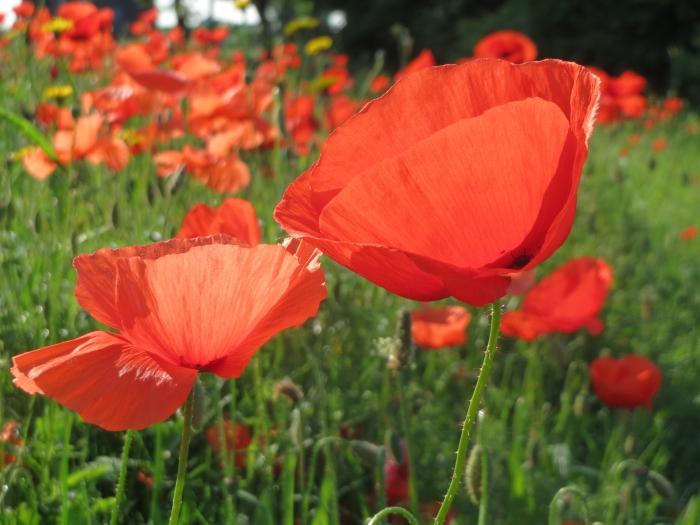Corn Poppy
(Papaver rhoeas)
Corn Poppy (Papaver rhoeas)
/
/

Andreas Rockstein
CC BY-SA 2.0























































Estimated Native Range
Summary
Corn Poppy is valued for its striking floral display and is often used in wildflower mixes, meadow gardens, and as a symbol of remembrance. It is easy to grow and can thrive in a variety of soil types, although it prefers full sun and well-drained soils. It is hardy to USDA Zone 8 to Zone 10. While it is not demanding in terms of water, moderate watering will support better flowering. However, gardeners should be cautious as Papaver rhoeas can be potentially invasive outside its native range, particularly in parts of the United States, and may outcompete native flora.CC BY-SA 4.0
Plant Description
- Plant Type: Herb
- Height: 0.8-1.5 feet
- Width: 0.5-1 feet
- Growth Rate: Rapid
- Flower Color: Red, Purple, White
- Flowering Season: Summer
- Leaf Retention:
Growth Requirements
- Sun: Full Sun
- Water: Medium
- Drainage: Slow, Medium, Fast
Common Uses
Bee Garden, Bird Garden, Border Plant, Butterfly Garden, Deer Resistant, Drought Tolerant, Edible*Disclaimer: Easyscape's listed plant edibility is for informational use. Always verify the safety and proper identification of any plant before consumption., Hummingbird Garden, Low Maintenance, Rabbit Resistant, Salt Tolerant, Showy Flowers
Natural Habitat
Wide range of habitats including agricultural land, roadsides, and disturbed soils across Europe and Asia
Other Names
Common Names: Corn Rose, Flanders Poppy, Field Poppy, Flanders Poppy, Common Poppy, Red Poppy, Korn-Valmue, Klatschmohn, Klatsch-Mohn, Silkkiunikko
Scientific Names: , Papaver rhoeas, Papaver erraticum, Papaver rhoeas f. rhoeas, Papaver rhoeas var. rhoeas, Papaver rhoeas f. strigosum, Papaver rhoeas var. vestitum, Papaver umbrosum, Papaver rhoeas var. pallidum, Papaver hookeri
GBIF Accepted Name: Papaver rhoeas L.